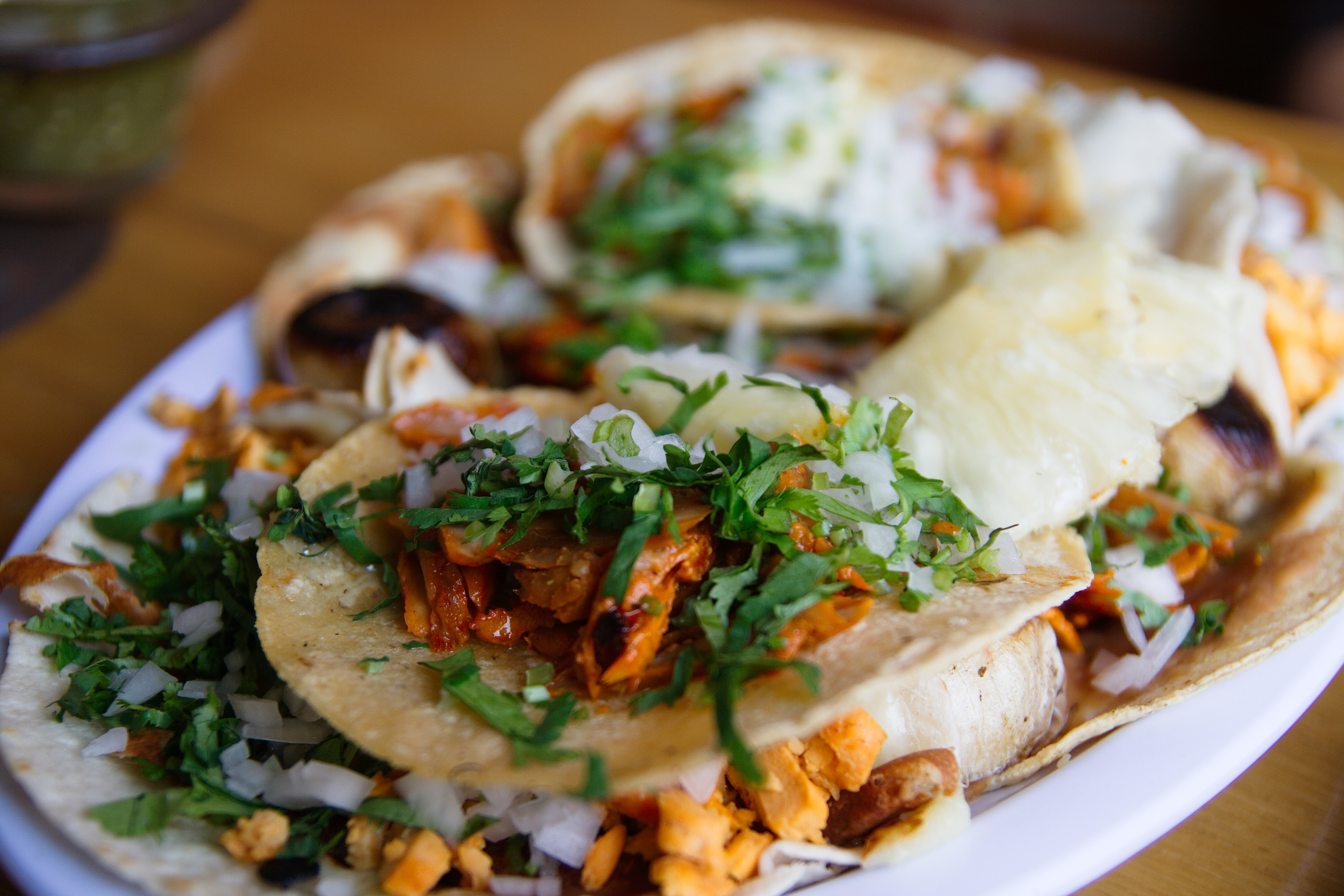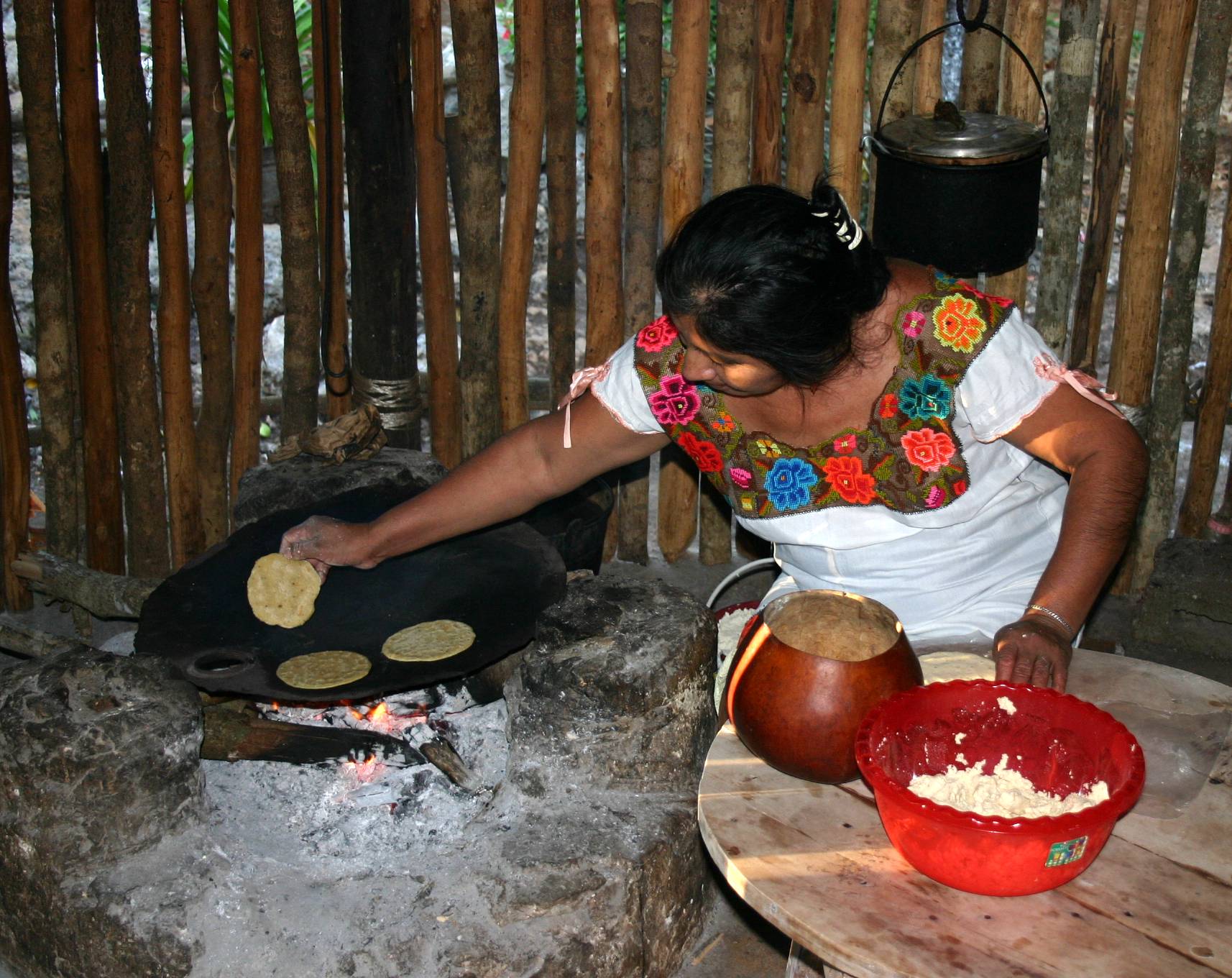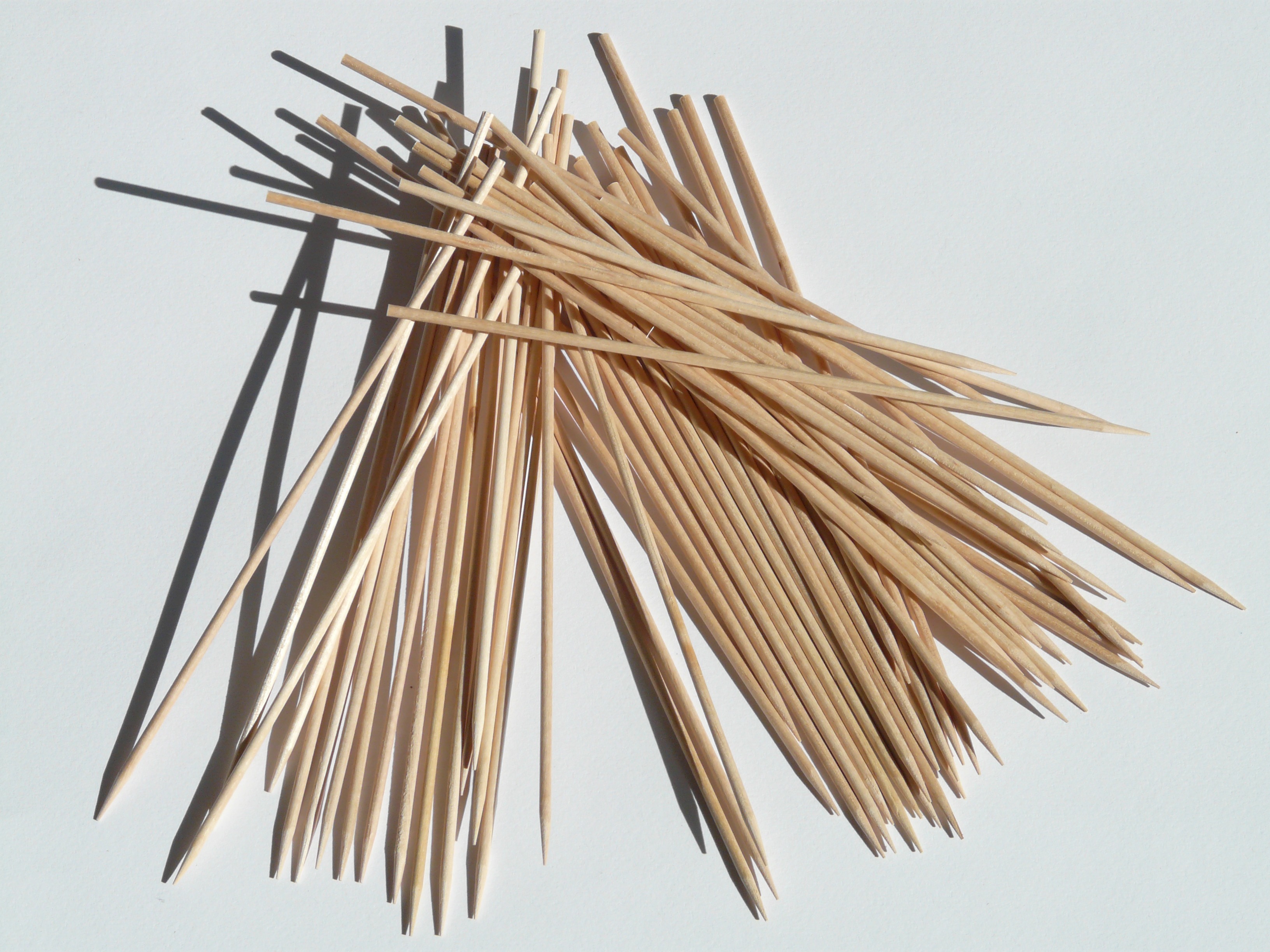|
Alambre
Alambre () is a Mexican cuisine, Mexican dish consisting of a choice of meat—popular choices include carne asada, grilled beef, al pastor, chicken, and shrimp—topped with chopped bacon, bell peppers, onions, cheese, salsa, and in some variations, avocado. Similar to ''fajitas'', it is usually served with freshly made corn or flour tortillas. The most common ingredient is beef, and other kinds of meat such as chicken or al pastor, pork are also used. Some recipes substitute bacon by chopped ham or chorizo. Alambres are popular in many parts of Mexico and among Mexican-American populations across the United States. Etymology The word ' literally means "wire" in Spanish. It is commonly believed that the name refers to the act of skewering the ingredients while cooking, although this is not always done. See also * List of Mexican dishes * References Mexican beef dishes Tortilla-based dishes {{mexico-cuisine-stub ... [...More Info...] [...Related Items...] OR: [Wikipedia] [Google] [Baidu] |
Carne Asada
Carne asada is grilled and sliced beef, usually skirt steak, flap steak, or flank steak though chuck steak (known as ''diezmillo'' in Spanish) can also be used. It is usually marinated then grilled or seared to impart a charred flavor. Carne asada can be served on its own or as an ingredient in other dishes. The term ''carne asada'' is used in Latin America and refers to the style of grilled meat in those countries. In South America, the term used for grilled meat is '' asado'' and it has a different style and preparation. Preparation Carne ranchera can be purchased from meat markets either prepared (''preparada'', i.e., already marinated) or not (''no preparada''), for marinating at home. The meat is characteristically marinated in lime juice, salt, and Mexican seasonings, but may also be simply rubbed with salt or spice rubs such as lemon pepper, before grilled. After grilling it is typically chopped for filling tacos and burritos, which also minimizes toughness. Once g ... [...More Info...] [...Related Items...] OR: [Wikipedia] [Google] [Baidu] |
Corn Tortilla
In Mexico and Central America, a corn tortilla or just tortilla (, ) is a type of thin, unleavened flatbread, made from hominy, that is the whole kernels of maize treated with alkali to improve their nutrition in a process called nixtamalization. A simple dough made of ground hominy, salt and water is then formed into flat discs and cooked on a very hot surface, generally an iron griddle called a comal. A similar flatbread from South America, called an '' arepa'' (made with ground maize, not hominy, and typically much thicker than tortillas), predates the arrival of Europeans to America, and was called ''tortilla'' by the Spanish from its resemblance to traditional Spanish round, unleavened cakes and omelettes. The Aztecs and other Nahuatl-speakers call tortillas tlaxcalli (''Nahuatl Dictionary.'' (1997). Wired Humanities Project. University of Oregon. Retrieved August 29, 2012, frolink). The successful conquest of the Aztec empire by the Spanish and the subsequent colonial e ... [...More Info...] [...Related Items...] OR: [Wikipedia] [Google] [Baidu] |
Main Course
A main course is the featured or primary dish in a meal consisting of several courses. It usually follows the entrée () course. Usage In the United States and Canada (except Quebec), the main course is traditionally called an "entrée". English-speaking Québécois follow the modern French use of the term entrée to refer to a dish served before the main course. According to linguist Dan Jurafsky, North American usage ("entrée") comes from the original French meaning of the first of many meat courses. See also * Full course dinner References Bibliography * External links Wikibooks Cookbook Food and drink terminology Courses (food) {{food-stub tl:Ulam ... [...More Info...] [...Related Items...] OR: [Wikipedia] [Google] [Baidu] |
Mexican Cuisine
Mexican cuisine consists of the cuisines and associated traditions of the modern country of Mexico. Its earliest roots lie in Mesoamerican Cuisine, Mesoamerican cuisine. Mexican cuisine's ingredients and methods arise from the area's first agricultural communities, such as those of the Olmecs, Olmec and Maya civilization, Maya, who domesticated maize, created the standard process of nixtamalization, and established foodways. Successive waves of other Mesoamerican groups brought with them their cooking methods. These included the Teotihuacanos, Toltec, Huastec civilization, Huastec, Zapotec civilization, Zapotec, Mixtec, Otomi people, Otomi, Tarascan state, Purépecha, Totonac, Mazatec, Mazahua people, Mazahua, and Nahuas, Nahua. With the Mexica formation of the multi-ethnic Triple Alliance (Aztec Empire), culinary foodways became infused (Aztec cuisine). Today's food staples native to the land include corn (maize), turkey, beans, squash, amaranth, Chia seed, chia, avocados, to ... [...More Info...] [...Related Items...] OR: [Wikipedia] [Google] [Baidu] |
Al Pastor
(from Spanish, "herdsman style"), ''tacos al pastor'', or ''tacos de trompo'' is a preparation of spit-grilled slices of meat, usually pork originating in the Central Mexican region of Puebla and Mexico City, where they remain most prominent; today, though, it is a common menu item found in throughout Mexico. The method of preparing and cooking is based on the lamb shawarma brought by Lebanese immigrants to the region. features a flavor palate that uses traditional Mexican adobada (marinade). It is a popular street food that has spread to the United States. In some places of northern Mexico and coastal Mexico, such as in Baja California, is known as or . A variety of the dish uses a combination of Middle Eastern spices and indigenous central Mexican ingredients and is called . Name The name “al pastor”, which literally translates to “herdsman”, “cowherd” or “shepherd” style, comes from «Asado al Pastor», which can be translated as “spit roast” ... [...More Info...] [...Related Items...] OR: [Wikipedia] [Google] [Baidu] |
Avocado
The avocado, alligator pear or avocado pear (''Persea americana'') is an evergreen tree in the laurel family (Lauraceae). It is native to Americas, the Americas and was first domesticated in Mesoamerica more than 5,000 years ago. It was prized for its large and unusually Avocado oil, oily fruit. The tree likely originated in the highlands bridging south-central Mexico and Guatemala. Avocado trees have a native growth range from Mexico to Costa Rica. Its fruit, sometimes also referred to as an alligator pear or avocado pear, is botanically a large Berry (botany), berry containing a single large seed. Sequencing of its genome showed that the evolution of avocados was shaped by polyploidy events and that commercial varieties have a Hybrid (biology), hybrid origin. Avocado trees are partly Self-pollination, self-pollinating, and are often Plant propagation, propagated through grafting to maintain consistent fruit output. Avocados are presently cultivated in the tropical and Medi ... [...More Info...] [...Related Items...] OR: [Wikipedia] [Google] [Baidu] |
Fajita
A fajita (; ), in Tex-Mex cuisine, is strips of any grilled meat, optionally served with strips of peppers and onions usually served on a flour or corn tortilla. The term originally referred to skirt steak, the cut of beef first used in the dish. Popular alternatives to skirt steak include chicken and other cuts of beef, as well as vegetables instead of meat. In restaurants, the meat is usually cooked with onions and bell peppers. Popular condiments include shredded lettuce, sour cream, guacamole, salsa, pico de gallo, shredded cheese, refried beans, and diced tomatoes. "Tacos de arrachera" is applied to the northern Mexican variant of the dish. Etymology ''Fajita'' is a Tex-Mex or Tejano diminutive term for little strips of meat cut from the beef skirt, the most common cut used to make fajitas. The word ''fajita'' is not known to have appeared in print until 1971, according to the ''Oxford English Dictionary''. (The word is Spanish for "strip", or "belt", from the Latin ... [...More Info...] [...Related Items...] OR: [Wikipedia] [Google] [Baidu] |
Tortilla
A tortilla (, ) is a thin, circular unleavened flatbread from Mesoamerica originally made from maize hominy meal, and now also from wheat flour. The Aztecs and other Nahuatl speakers called tortillas ''tlaxcalli'' (). First made by the indigenous peoples of Mesoamerica before colonization, tortillas are a cornerstone of Mesoamerican cuisine. Corn tortillas in Mesoamerica are known from as early as 500 BCE. Etymology The word ''tortilla'' is derived from the Spanish word ''torta'', meaning "cake," plus the diminutive -''illa''; as a result, the word means "little cake" in Spanish. Varieties Corn Tortillas made from nixtamalized maize meal (''masa de maíz'') are the oldest variety of tortilla. They originated in Mexico and Central America, and remain popular throughout the Americas. Peoples of the Oaxaca region in Mexico first made tortillas at the end of the Villa Stage (1500 to 500 BCE). Towards the end of the 19th century, the first mechanical utensils for making t ... [...More Info...] [...Related Items...] OR: [Wikipedia] [Google] [Baidu] |
Chorizo
''Chorizo'' ( , ; ; see #Names, below) is a type of pork sausage originating from the Iberian Peninsula. It is made in many national and regional varieties in several countries on different continents. Some of these varieties are quite different from each other, occasionally leading to confusion or disagreements over the names and identities of the products in question. In Europe, Spanish cuisine, Spanish and Portuguese cuisine, Portuguese is a fermentation (food), fermented, salt-cured meat, cured, smoking (cooking), smoked sausage which gets its smokiness and deep red color from paprika, dried, smoked, red peppers (/); it may be sliced and eaten without cooking, or added as an ingredient to add flavor to other dishes. Elsewhere, ''chorizo'' may not be fermented or cured, requiring cooking before eating. In Mexico it is made with chili peppers instead of paprika. Iberian ''chorizo'' is eaten sliced in a sandwich, grilling, grilled, frying, fried, or simmering, simmered in l ... [...More Info...] [...Related Items...] OR: [Wikipedia] [Google] [Baidu] |
Mexican-American
Mexican Americans are Americans of full or partial Mexican descent. In 2022, Mexican Americans comprised 11.2% of the US population and 58.9% of all Hispanic and Latino Americans. In 2019, 71% of Mexican Americans were born in the United States. Mexicans born outside the US make up 53% of the total population of foreign-born Hispanic Americans and 25% of the total foreign-born population. Chicano is a term used by some to describe the unique identity held by Mexican-Americans. The United States is home to the second-largest Mexican community in the world (24% of the entire Mexican-origin population of the world), behind only Mexico. Most Mexican Americans reside in the Southwest, with more than 60% of Mexican Americans living in the states of California and Texas. They have varying degrees of indigenous and European ancestry, with the latter being of mostly Spanish origins. Those of indigenous ancestry descend from one or more of the over 60 indigenous groups in Mexico ( ... [...More Info...] [...Related Items...] OR: [Wikipedia] [Google] [Baidu] |
Skewer
A skewer is a thin metal or wood stick used to hold pieces of food together. The word may sometimes be used as a metonym, to refer to the entire food item served on a skewer, as in "chicken skewers". Skewers are used while grilling or roasting meats and fish, and in other culinary applications. In English, brochette is a borrowing of the French word for skewer. In cookery, ''en brochette'' means 'on a skewer', and describes the form of a Dish (food), dish or the method of cooking and serving pieces of food, especially grilled meat or seafood, on skewers; for example "lamb cubes en brochette". Skewers are often used in a variety of kebab dishes. Utensil Metal skewers are typically stainless steel rods with a pointed tip on one end and a grip of some kind on the other end for ease of removing the food. Non-metallic skewers are often made from bamboo, as well as hardwoods such as birch, beech, or other suitable wood. Prior to grilling, wooden skewers may be soaked in water to av ... [...More Info...] [...Related Items...] OR: [Wikipedia] [Google] [Baidu] |







